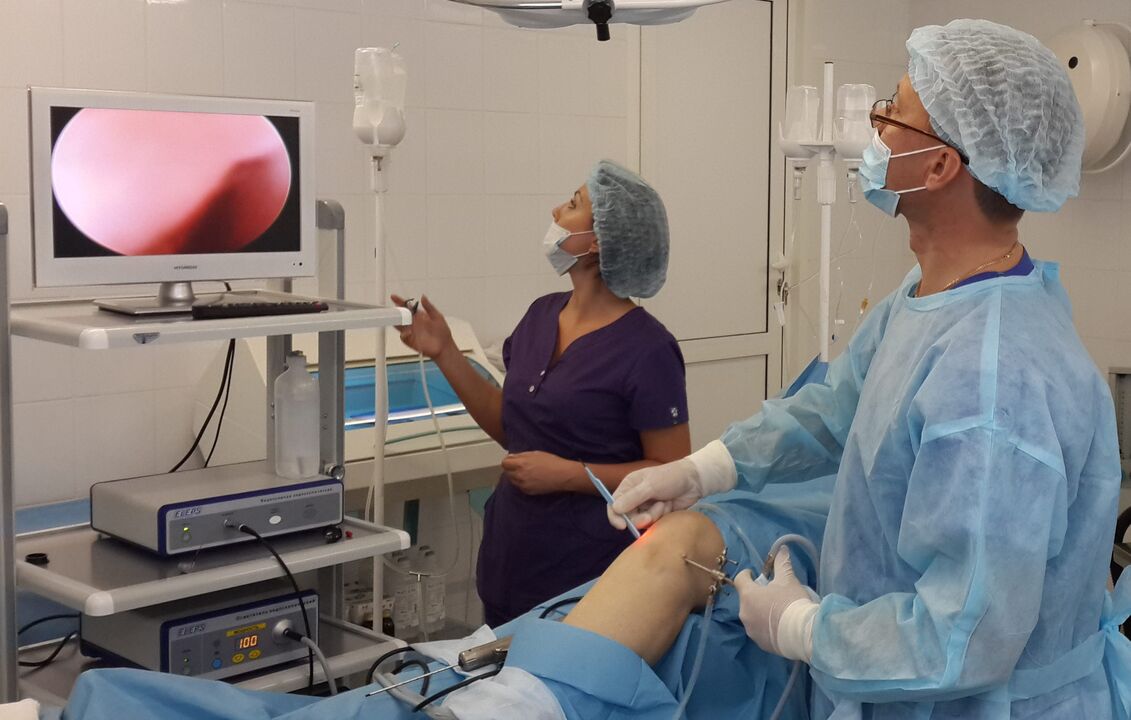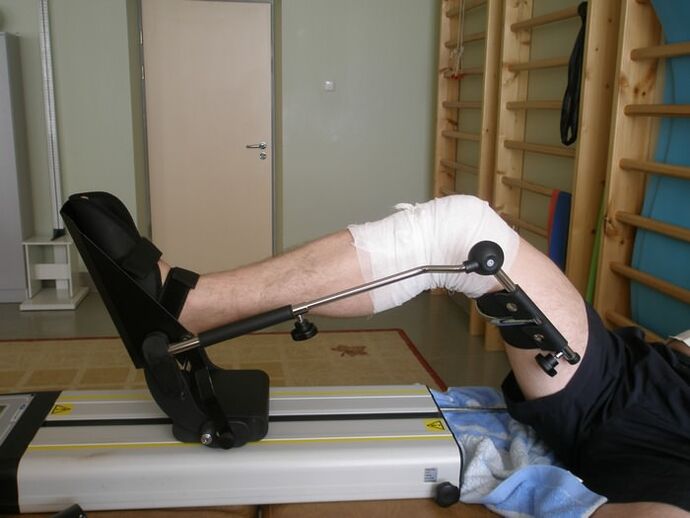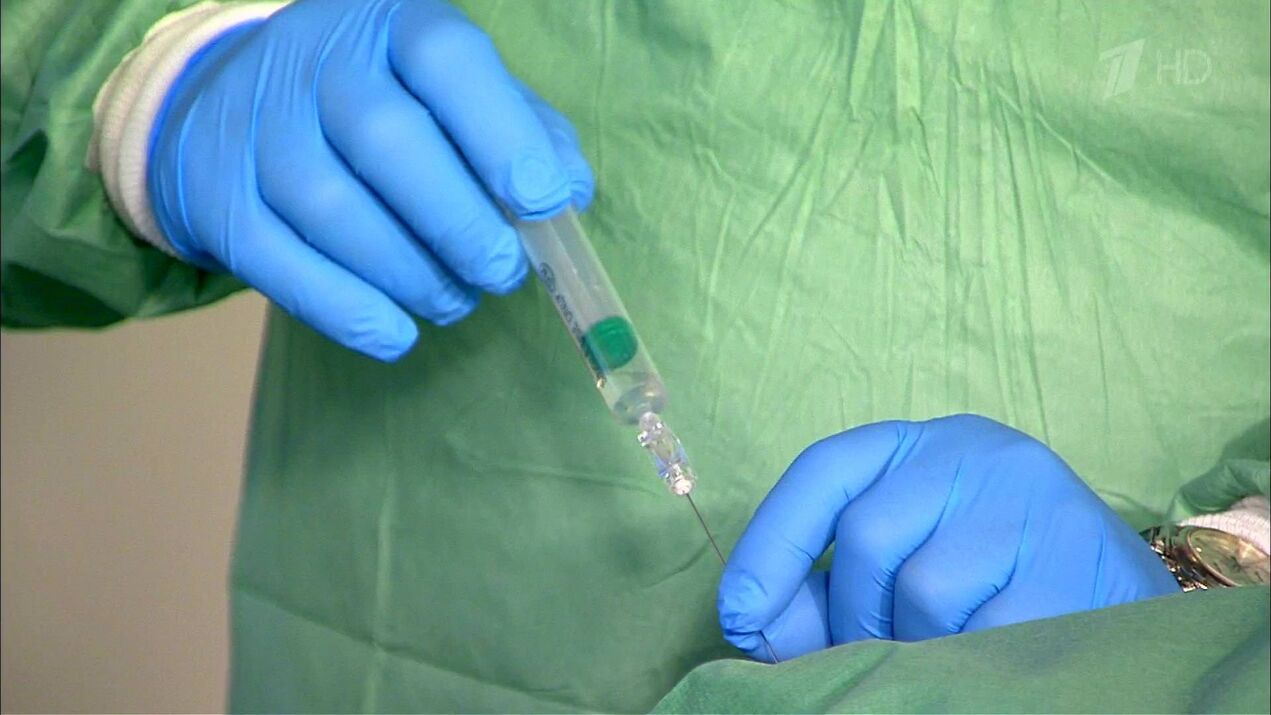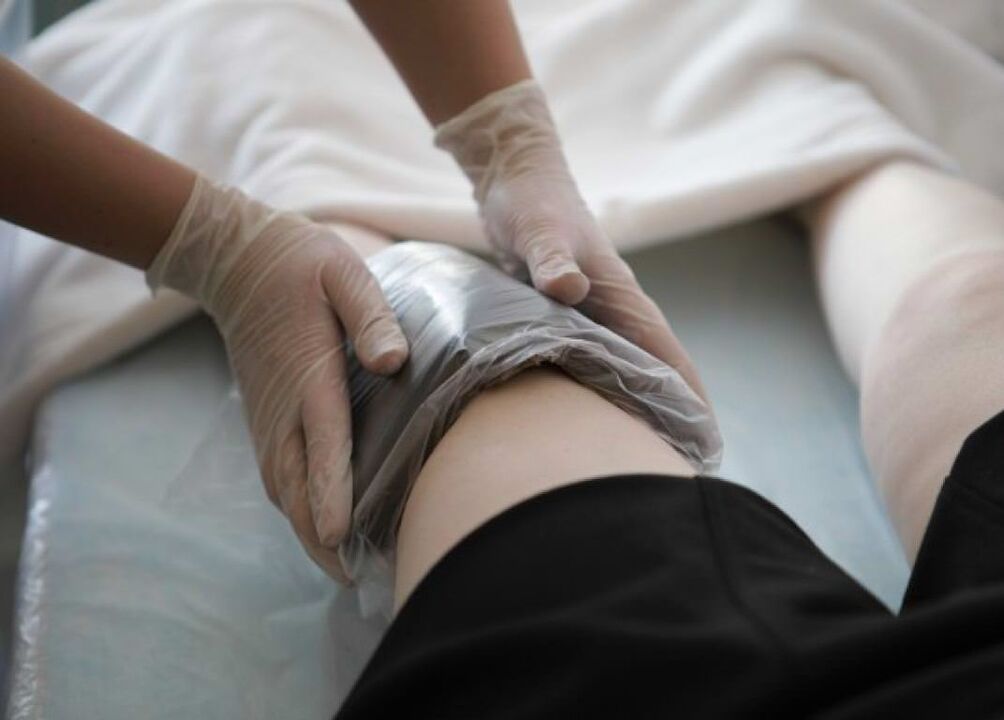Treating your knee joint is not a quick process, and you won't always be able to get rid of the pain right away. Usually, they occur due to destruction and deformation of the cartilage tissue, but there can be other reasons. Treatment cannot be delayed, as joint diseases develop rapidly and can lead to serious consequences, even disability.
Causes of knee pain

The knee is an organ in which the kneecap is linked to two bones. The coccyx, located at the front of the knee, is connected by the tendons of the quadriceps muscle, which continue to the ligaments. The bones are covered with cartilage, and between them is the lunar cartilage - menisci. In addition, the knee has several synovial sacs to store fluid, which acts as a lubricant for the knee.
This whole complex mechanism is designed to flex, stretch, and absorb shock during movement. Any violation of his work leads to discomfort and pain. How to treat the knee should be determined by a traumatologist after diagnosis.
The causes of pain can be very diverse, from fatigue and overuse to serious illnesses, and they are divided in this way:
- Knee injuries - all mechanical injuries can be attributed to such reasons. Bruises, ruptured ligaments, bleeding in the joint cavity with intra-articular fractures, trauma and rupture of meniscus, dislocation of the kneecap. These causes are often characterized by acute localized pain, severe swelling, bruising, and difficulty or inability to move the joint.
- Inflammatory and degenerative joint diseases are the most common causes of knee pain in the elderly. Arthritis, ankylosing spondylitis, chondropropathy, bursitis, Schlatter's disease and others. Characterized by increasing pain or simply discomfort with movement, clicking/clattering of the knee, arthropathy, and chronic knee instability.
- Various systemic viral and infectious diseases also lead to inflammation and pain. These include osteoporosis, tuberculosis, syphilis, osteomyelitis and many others. Such pains can be of a different nature, depending on the inflammation of the body damaged by the virus and the infection.
- Diseases in which pain spreads down to the knee. Sciatic nerve damage, hip sclerosis, fibromyalgia. Such pains are a side effect, therefore they are aching or painful in nature. Treatment of the knee joint in such cases will not bring about remission.
Diagnosing and figuring out what's causing the pain will determine how to treat the knee joint. When you have unexplained symptoms, it is better not to self-medicate.
knee treatment
Treatment of knee pain can be conservative or surgical. A surgical approach is an operation to remove the cause of the pain. Conservative therapy is a set of techniques aimed at eliminating symptoms and pathologies. So what is the treatment for knee pain?
Surgical method
Such methods may be indicated for severe trauma and inflammatory and degenerative diseases. Acute pain in the joints can be a sign of serious injury or complete wear and tear of the cartilage. Therefore, several types of operations are used.
Arthroscopy
Such a surgery can be performed both for diagnostic purposes and for the treatment of serious joint injuries. Arthroscopy is inserted into the knee through micro-incisions, one tube is equipped with a camera and displays "images" on a screen, the other is used to manipulate the inside of the joint, mainly for treatment.
Such an operation significantly reduces the postoperative and recovery time, moreover, it practically leaves no scars. With the help of arthroscopy, the torn ligaments and meniscus will be surgically removed. It is sometimes used to treat arthritis, but its effectiveness in this case is questionable.

Cut bones
The most radical methodWith such an operation, the knee joint is fully opened, the patella is removed with the help of incisions, allowing direct manipulation of the cavity. This method is also known as open. Usually, braces are applied to the bones, which greatly reduces the load on the joints.
A major disadvantage of such a surgery is the long recovery time. Patients should be able to walk in 1-2 months and lead an active lifestyle after just one year. But such surgery often guarantees long-term remission.
You should know that osteotomy is applied in cases where the connective tissue is severely damaged or deformed, when it is necessary to remove part of the diseased element.
Endoscopic
Done when other treatments have ended, the joint continues to collapse and is no longer fully performing its functions. After complete removal of the affected element by bone surgery, an implant is placed in the knee. It can be implanted from a donor, or it can be replaced with an artificial prosthesis. They are made of plastic, ceramic or metal alloy.
In this way, the disease completely disappears and the patient achieves permanent remission. However, it is worth considering that restorations may be rejected and other side effects may also occur. Israel is still the leader in the field of arthroplasty.

For reference! In most cases, knee pain is treated in more gentle ways. And such therapy is very effective, and most importantly, it allows you to maintain an active lifestyle during the rehabilitation period.
Conservative treatment
These methods are a set of techniques aimed at regenerating, healing and restoring joints. It includes drug therapy, physiotherapy and exercise exercises, and physical therapy. In some cases, it may include folk methods. At the first manifestations of knee pain, you should choose a knee brace or brace to slow down tissue destruction before starting primary treatment and reduce symptoms of the disease.
Medicines for treatment
Knee pain what to do? Of course, you have to take pain relievers and pain relievers. Such funds can be in different pharmacological forms. Ointments, tablets are recommended for dull aches and pains. For acute and shot, it is better to resort to injections that will provide instant pain relief.
Once a diagnosis is made, nonsteroidal drugs may be prescribed. With trauma, severe arthritis, and other degenerative diseases, the knee often swells. That's what these drugs are for. They improve blood circulation, reduce inflammation and relieve pain.

The final stage of drug therapy will be oral chondroprotectors. They are prescribed to completely treat any damage and change in the cartilage tissue. This is the basis of conservative treatment.
Reality! Chondroprotectors, like bricks, restore cartilage. They have the property of regenerating them and restoring elasticity.
But it is necessary to prepare for the fact that treatment with chondroprotectors will be very long. The course lasts from three months to a year. The pharmacological form can be in the form of tablets, ointments and injections. By the way, such substances can also be found in food, so for pain in the knee, doctors recommend eating jelly, meat broth, butter and jelly.
In some cases, intramuscular injection of hyaluronic acid may be indicated. It is this substance that is part of the synovial fluid that fills the joint cavity. It will help the connective tissue regeneration process, and the recovery process takes place much faster.
Exercise therapy and gymnastics
This is the most important period both after surgical treatment and after medication. Physical therapy should also be performed to stop the pain. This process must take place under the supervision of a rehabilitation specialist in a special center or sanatorium in order to correctly perform the exercises. It usually takes 2-3 months.
With its help, the knee joint gradually returns to an active life by increasing the range of motion. Swimming will be the most important factor. It will not only allow smooth movement of joints, but also improve blood circulation and metabolism, which has a positive effect on tissue repair.
Physical therapy
Such procedures are aimed at recovery and safe treatment. These methods achieve the best results with the least load. These include the following methods:
- therapeutic ultrasound;
- electrophoresis;
- infrared therapy;
- different startup.
How else can you cure your foot if your knee hurts a lot? A good physical therapy procedure is also massage, which increases blood circulation and speeds up the recovery process. Massage is a good pain reliever and also has a general health-promoting effect.
Topical preparations can be used without a doctor's prescription, such treatment is acceptable when the knee is painful. But most likely, this will only eliminate the symptoms, and the cause will remain, and sooner or later, it will again cause discomfort.
Folk remedies
How to cure knee pain with folk methods, perhaps every patient who has encountered this disease knows:
- The first way would be to warm up the joint. This can be done with the help of special compresses of vodka and honey at home.
- You can visit a bath or sauna, which has a beneficial effect on the whole body.
- A very modern method of warming would be orthopedic warming on batteries. It is convenient, comfortable and does not require much effort. One session can relieve pain in just 20-30 minutes.
- Placing mud and algae is also good for bones and joints. They have the ability to restore elasticity to cartilage in a short time, improve blood circulation, contribute to better tissue nourishment.
It is important to remember that with severe injuries and in the late stages of the disease, alternative methods will not work. So any home treatment should be discussed with your doctor.

Patient feedback on treatments
It is impossible to answer the question of how to treat knee effusion without determining the cause, because early symptomatic treatment in this case can turn the disease at an early stage into a chronic one. An integrative approach is always required and patient feedback confirms this.
- Woman, 55: "My knee has been hurting for a long time. I don't understand why, then I went to the doctor and it turned out that I had joint disease. They prescribed me chondroprotectors. forgot about the pain. . with the help of exercise therapy. "
- Man, 35 years old: "He suffered a severe knee injury - ruptured meniscus. The treating doctor prescribed arthroscopy, after a short rehabilitation period, he returned to activities. big sport".
- Man, 48 years old: "Unfortunately, the degenerative joint disease has completely destroyed my joints, I didn't notice the pain for a long time. I had arthroscopic surgery and joint placement. porcelain. I returned to an active life and even started running in the morning. . "
- Boy, 20 years old: "I had a pinched sciatic nerve, it caused me a dull pain in my knee. I didn't understand why and applied non-steroidal ointment to the joint. Then I went to the doctor and found out. that. these pains are secondary, and my knee is healthy. "







































